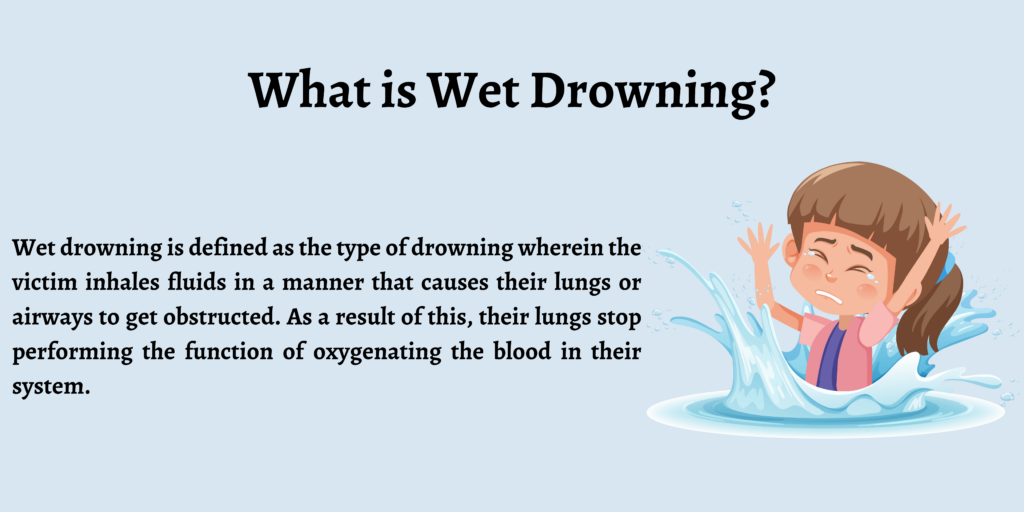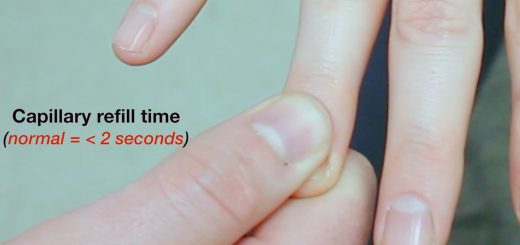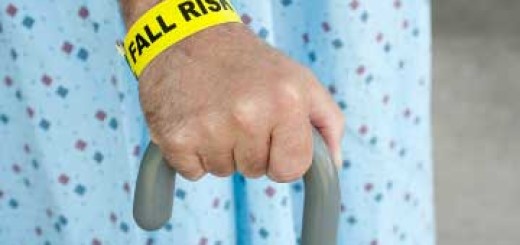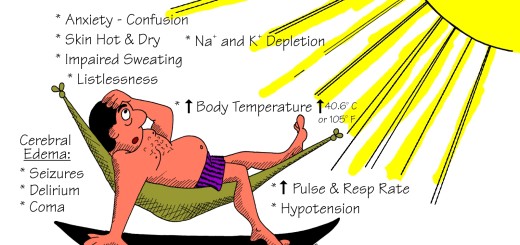First aid for Drowning
Drowning is a common cause of accidental death, especially amongst children and toddlers. Contrary to popular opinion, a casualty who drowns does not usually inhale large amounts of water into the lungs.
90% of deaths from drowning are caused by a relatively small amount of water entering the lungs, interfering with oxygen exchange in the alveoli (wet drowning). The other 10% are caused by muscle spasm near the epiglottis and larynx blocking the airway (dry drowning). The victim will usually swallow large amounts of water, which might then be vomited as they are rescued or resuscitation takes place.
It should be remembered that other factors may contribute to the cause of drowning – for example, hypothermia, alcohol, or an underlying medical condition such as epilepsy or a heart attack.
Secondary Drowning
If a small amount of water enters the lungs, irritation is caused and fluid is drawn from the blood into the alveoli. This reaction could be delayed for several hours, so a casualty who has been resuscitated and apparently recovered might relapse into severe difficulty breathing at a later stage. It is for this reason that any casualty who recovers from ‘near drowning’ should be taken to a hospital immediately.
What is Wet Drowning?
Wet drowning is defined as the type of drowning wherein the victim inhales fluids in a manner that causes their lungs or airways to get obstructed. As a result of this, their lungs stop performing the function of oxygenating the blood in their system.
Whenever cases of drowning are concerned, the spasm relaxes, causing water to enter into the person’s lungs. This was previously referred to as wet drowning.
What is Dry Drowning?
Dry drowning occurs when a person inhales a small amount of water through their mouth and/or nose, causing a spasm that makes their airway close up. This usually happens after a person leaves the water.
Although some confuse dry drowning and secondary drowning with being the same thing, they are different. Dry drowning and secondary drowning can also occur in adults, but they are more common among young children.
In secondary drowning, the person inhales water into their lungs, causing them to get filled up with fluid. As a result of this, a kid or adult could experience breathing issues.
The symptoms related to secondary drowning can manifest themselves in about four hours after the person has been in the water. However, they can take between 24 to 48 hours to be evident.
Signs of secondary drowning include lethargy, chest pain, coughing, and changes in behavior or mood. Some experts consider both dry and secondary drowning as submersion injuries.
However, neither of them should be neglected as they cause breathing problems and even death in certain cases.
Symptoms of Dry Drowning
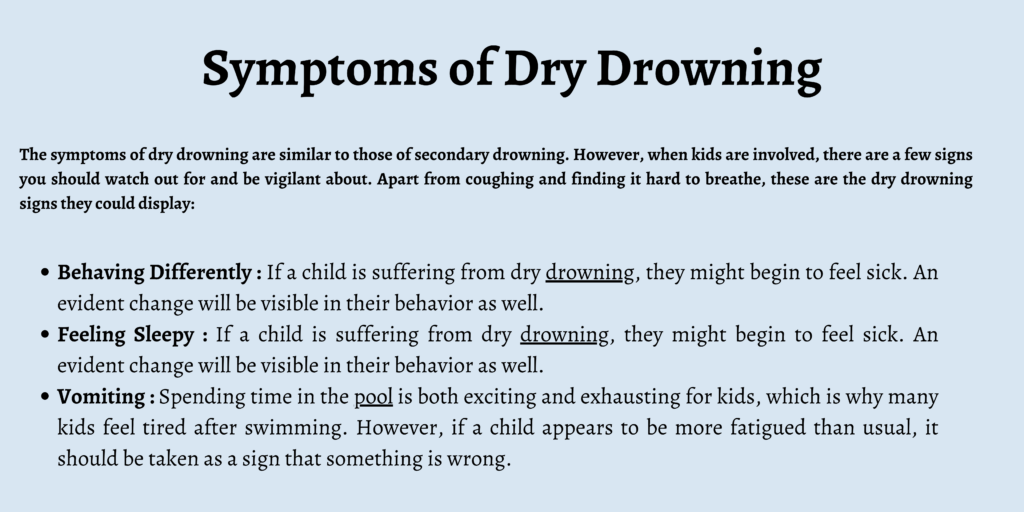
The symptoms of dry drowning are similar to those of secondary drowning. However, when kids are involved, there are a few signs you should watch out for and be vigilant about. Apart from coughing and finding it hard to breathe, these are the dry drowning signs they could display:
Behaving Differently
If a child is suffering from dry drowning, they might begin to feel sick. An evident change will be visible in their behavior as well.
Parents will notice that their child isn’t behaving like themselves or is being more forgetful. That’s when a parent should realize that their kid is experiencing a shift in the oxygen status in their system.
Feeling Sleepy
Spending time in the pool is both exciting and exhausting for kids, which is why many kids feel tired after swimming. However, if a child appears to be more fatigued than usual, it should be taken as a sign that something is wrong.
The sign of feeling sleepy or fatigued points towards the blood in their body not receiving enough oxygen. Take them to a hospital immediately and follow the instructions provided by the doctor.
Vomiting
Vomiting can occur when the body experiences a lack of oxygen. It can also happen due to gagging and coughing persistently. If your kid has these signs, it could be time to take them to get medical help immediately.
First Aid Treatment of Drowning
- Do not put yourself at risk. ‘Reach or throw – don’t GO’.
- If possible keep the victim horizontal during the rescue as shock can occur.
- Check Airway and Breathing. – Perform CPR if necessary (if they are not breathing normally)
- Call for emergency medical help, even if the victim appears to recover initially after the drowning episode.
How to Treat Dry Drowning
Contact the emergency medical services right away the minute you notice someone displaying symptoms of dry drowning. Meanwhile, try to keep the child or victim calm till the arrival of medical help, as this can allow the victim’s windpipe muscles to relax in a quicker manner.
After the emergency medical technicians reach the scene, they will begin the treatment immediately, which can also involve resuscitation in case the patient has passed out due to a lack of oxygen flow.
The patient will be taken to a medical facility to be observed once their condition is stable. Medical observation is imperative if a patient shows signs of dry drowning following a submersion incident.
This is so that the doctor or their team members can ensure the patient is breathing properly and also to rule out the possibility of bacterial pneumonia or secondary drowning.
In such cases, it could be necessary to conduct a chest X-ray to make sure the patient’s lungs are not filled with water.
How Can Dry Drowning Be Prevented?
Drowning happens to be one of the most common causes of death in young kids. Therefore, taking precautions is essential so that water-related accidents can be avoided altogether.
When a child is two years old or younger, water submersion of any kind is a major risk. Be sure to take the kid to an emergency room straight away, even if they have been under the water for about one or two minutes.
Here are some of the things that can be done to reduce the chances of dry drowning:
- Invest in swimming lessons for your child. When kids are aware of how to navigate in water bodies safely, they are more likely to be mindful of the rules of water safety. It enables them to struggle less in such conditions and become skilled at handling themselves well in pools and other water bodies.
- Whenever your kid is swimming, make sure to supervise them constantly and keep an eye out for any possible risks or dangers.
- Ensure that everyone wears a life jacket in situations that involve boating.
- Remember to keep the gates to the pool closed at all times so that the little kids can’t access them without adult supervision.
- Never allow your child to play near the ocean without the presence of a lifeguard.
- If you frequently find yourself supervising kids at beaches or pools, get yourself trained in an infant CPR class in case you ever need to implement the knowledge in emergency situations.
- In addition to boating, see to it that children wear floatation devices on canoes, jet skis, or any other instances where they are surrounded by water.

